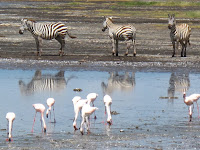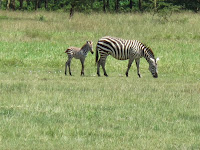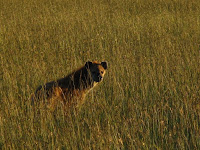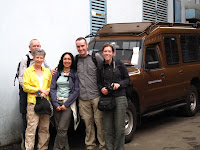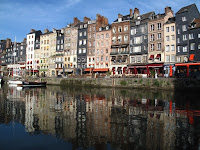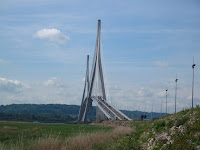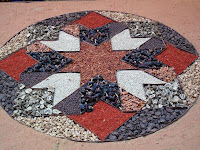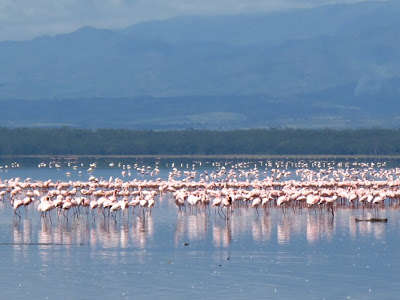
 Northwest of Nairobi is Lake Nakuru National Park. We booked a day trip there with Gametrackers, and once again, Tom was our driver and guide for the day. This trip is equally unmissable, and complimented the previous trip. Amazingly, we had not seen any monkeys in the Mara, but the first animals to greet us at the Nakuru Park gates, were many monkeys. One with a pink lollipop was entertaining a group of school children.
Northwest of Nairobi is Lake Nakuru National Park. We booked a day trip there with Gametrackers, and once again, Tom was our driver and guide for the day. This trip is equally unmissable, and complimented the previous trip. Amazingly, we had not seen any monkeys in the Mara, but the first animals to greet us at the Nakuru Park gates, were many monkeys. One with a pink lollipop was entertaining a group of school children.

The first sight inside the gates is the lake, with a pink fringe formed by the thousands of flamingos. The sight is stunning, and we spent some time admiring them, as well as seeing zebras and water buffalo drink at the stream running into the lake along with various other bird species including large storks.


 But there is more to this park than flamingos, and we were able to compliment our previous safari experiences. There was a herd of 8 Rothschild giraffes, who appeared to be walking towards our vehicle, and ended up crossing the road just in front of us. This was an amazing sight. The other new animal was the white rhinos that were all around the southern end of the lake. The driver had to keep to the roads, but even so, was able to drive right up to a mother and baby.
But there is more to this park than flamingos, and we were able to compliment our previous safari experiences. There was a herd of 8 Rothschild giraffes, who appeared to be walking towards our vehicle, and ended up crossing the road just in front of us. This was an amazing sight. The other new animal was the white rhinos that were all around the southern end of the lake. The driver had to keep to the roads, but even so, was able to drive right up to a mother and baby.  The fantastic thing from the safari trips was that every animal we saw, we saw really close; there was no staring into the distance or any need to use binoculars to possibly make out something “way over there”. The animals all performed fabulously, either walking right past us or sitting right beside the tracks. The rangers have obviously trained them well!
The fantastic thing from the safari trips was that every animal we saw, we saw really close; there was no staring into the distance or any need to use binoculars to possibly make out something “way over there”. The animals all performed fabulously, either walking right past us or sitting right beside the tracks. The rangers have obviously trained them well!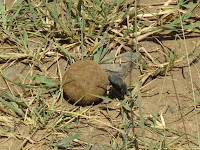

 The day out was complimented by a superb buffet lunch at Sarova Lion Hill Lodge. We were able to glimpse how the 'other half' go on safari! A beautiful girl met us with warm towels, and we were taken through to the very extensive buffet lunch. The only aspect to mar the experience was the many mosquitos, something we had been spared in the Mara.
The day out was complimented by a superb buffet lunch at Sarova Lion Hill Lodge. We were able to glimpse how the 'other half' go on safari! A beautiful girl met us with warm towels, and we were taken through to the very extensive buffet lunch. The only aspect to mar the experience was the many mosquitos, something we had been spared in the Mara.